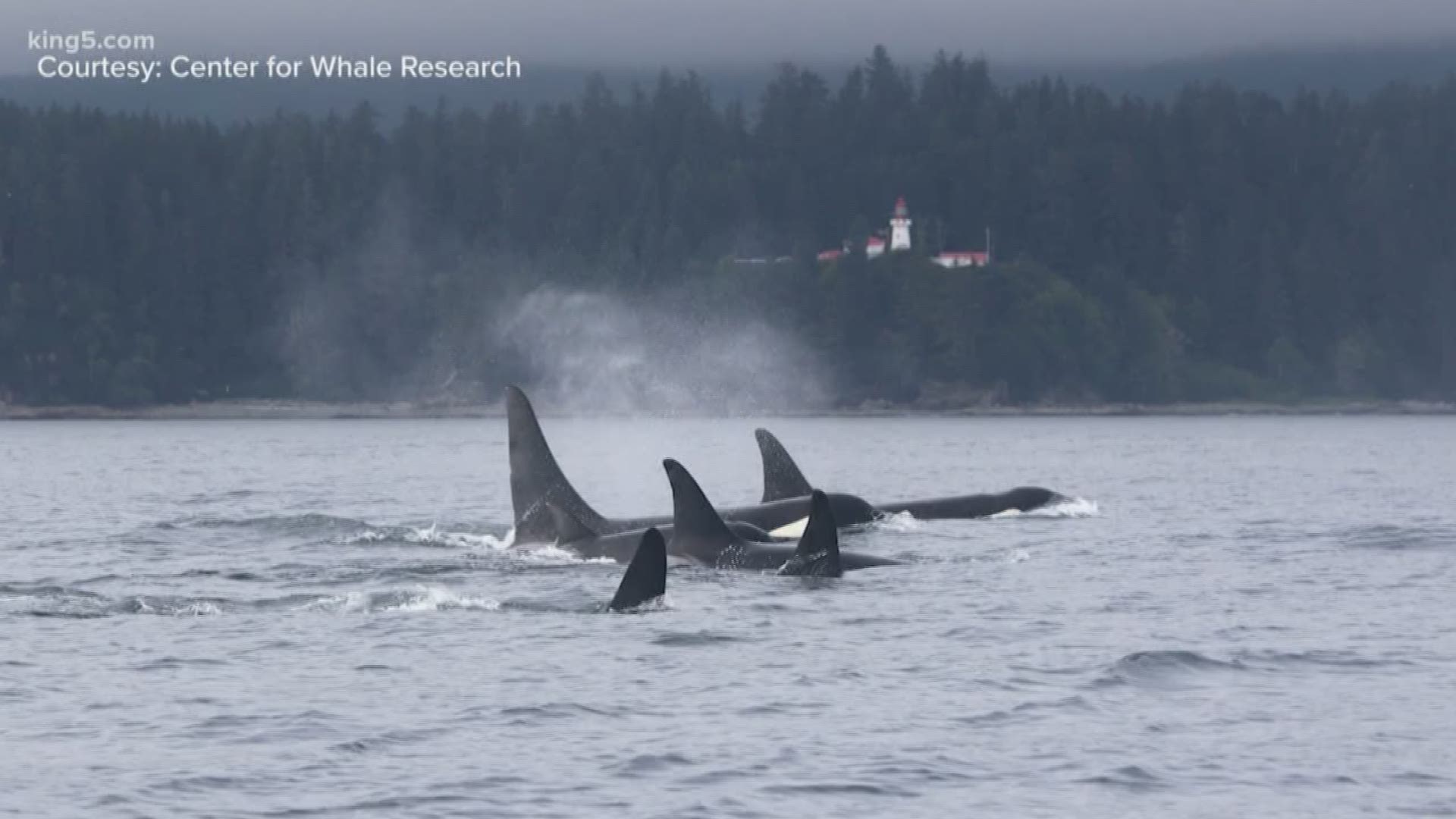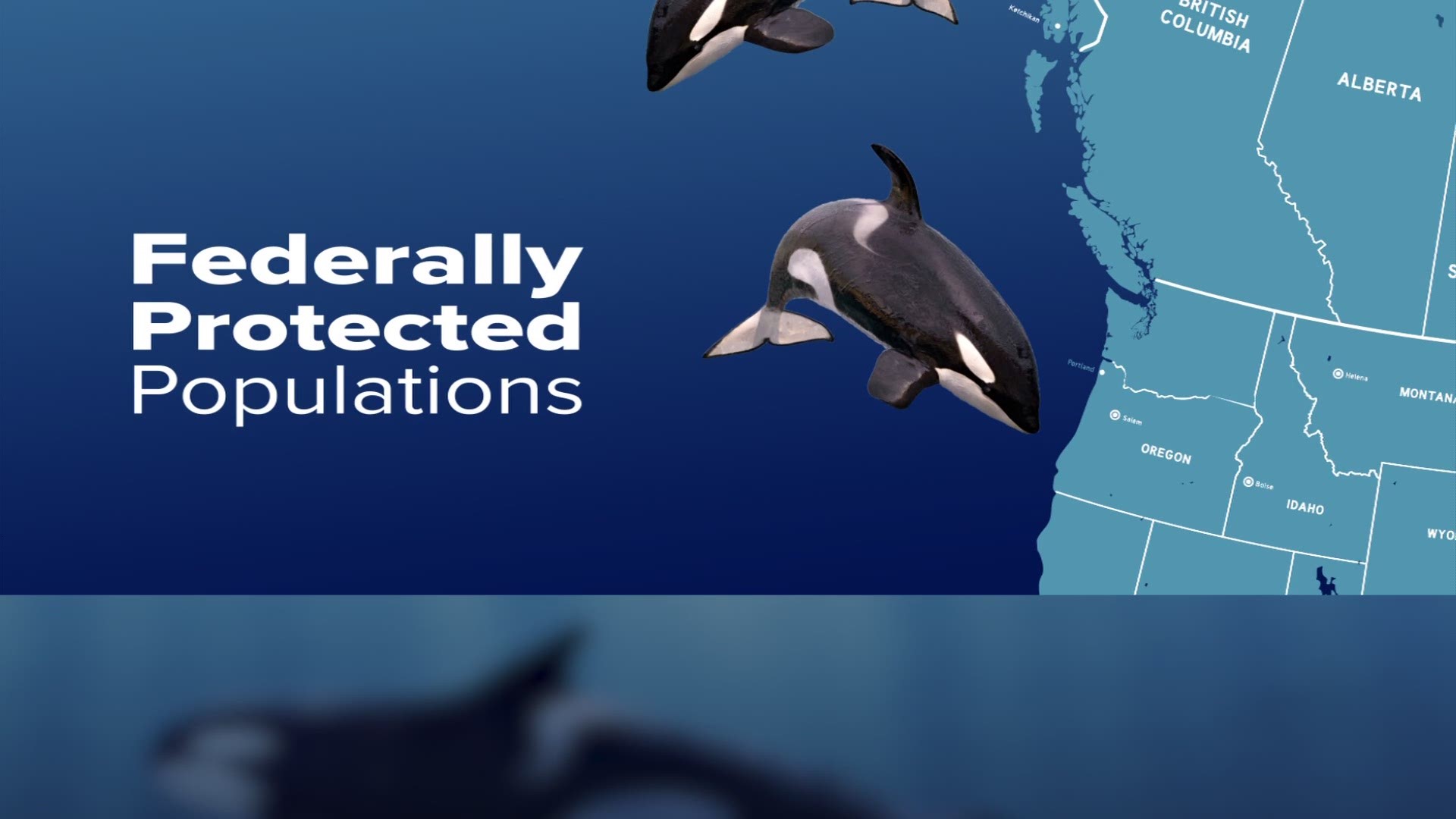A member of the Southern Resident killer whale population was missing during the latest encounter with the L Pod in Haro Strait, and is feared dead by some researchers.
According to Center for Whale Research, L41 was not present on Jan. 24, when L Pod was spotted in the area of Haro Strait.
"Given [L41's] age and that he looked a little thin in our January 2019 encounter, we fear he may be gone and will consider him missing unless he shows up unexpectedly in an upcoming encounter," an encounter summary from the organization reads.
L41, known as Mega to many whale watchers, was born in 1977, and experienced a drastically changing time to be an orca, said Dr. Deborah Giles, a University of Washington researcher based in Friday Harbor.
"He's managed to live longer than a lot of whales we're losing these days," she said.
He sired at least 15 living whales, she said - prolific for an orca and important, because many male orcas born now are not surviving to a reproductive age - raising concerns of the animals' long-term survival.
"This is an animal that really was born and grew up in the eyes of the public," Giles said. "He certainly lived up to his name Mega in his personality and size."
Mega is easily identifiable by his large fin, with a small notch on the trailing edge.
Though this is L41's first noted absence from L Pod, Giles said she believes he's likely dead. She noted he was tightly bonded with the pod, and often seen near his sisters.
As of July 2019, the Southern Resident killer whale population was 73 total. There were 22 in J Pod, 17 in K Pod and 34 in L Pod. That's a low number, according to scientists, when looking at the total living population worldwide, which is in the thousands. An even lower number of those whales are capable of reproducing and revitalizing the group.
Some good news came out of the latest encounter. Orca calf L124 -- which was just weeks old early last year -- "looked good," according to Center for Whale Research.
Boat noise, pollution, and dwindling numbers of Chinook salmon, the orcas’ preferred prey, are all blamed for contributing to their decline. A study from the University of Washington and the National Oceanic and Atmospheric Administration (NOAA) says that a rise of resident orcas and their insatiable appetite for large Chinook salmon is the main driver behind the decline of the fish.
A task force was established to help tackle the most pressing issues the orcas face. Since then, a number of bills aimed at helping the orcas were approved.
Measures signed into law last year include requiring more oil shipments near the San Juan Islands to have tugboat escorts to prevent spills, allowing anglers to catch more walleye and bass that prey on young salmon, and giving state agencies the authority to ban toxic chemicals in consumer goods. Other important parts include improving the state's ability to enforce permit requirements for work that hardens shorelines, such as by installing bulkheads near homes, and making vessels stay farther away from orcas and go slower when they're near them.


